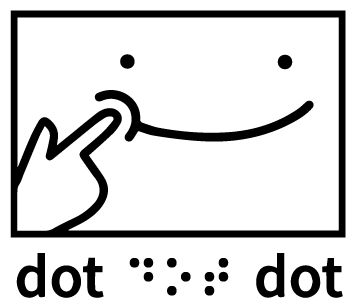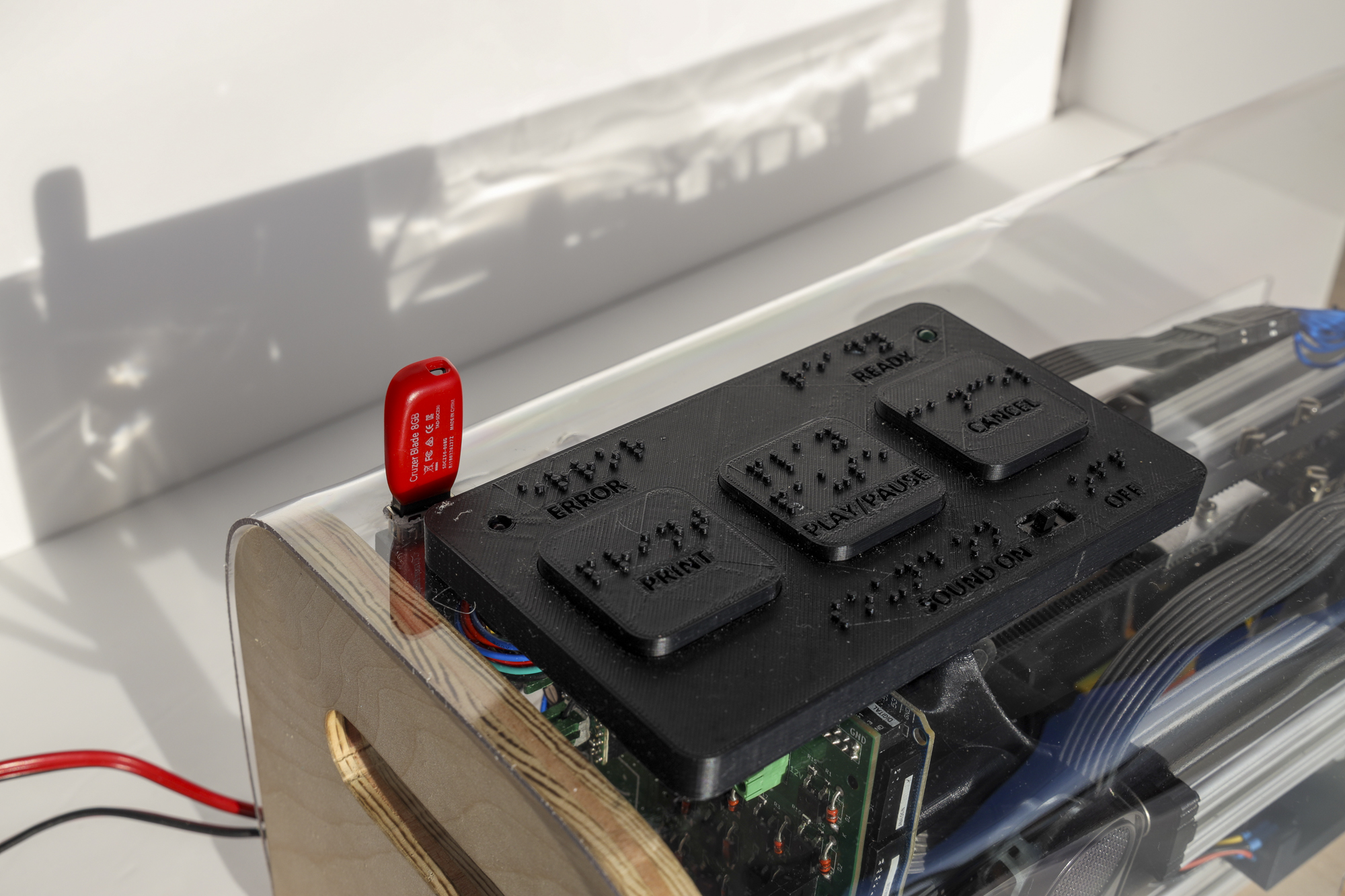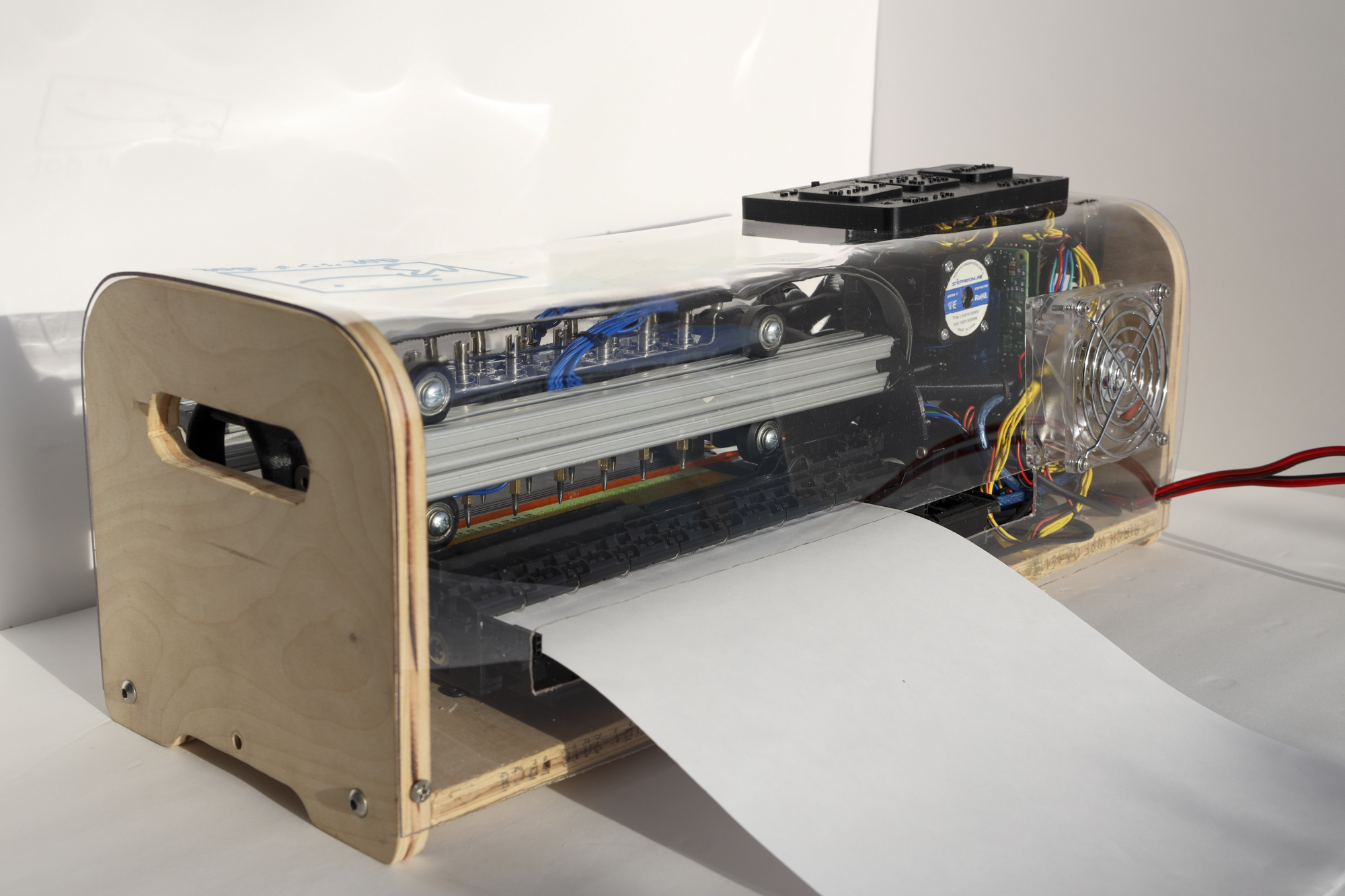


Design
An early driving principle for the design of the Portabraille Printer was the idea that this project would have meaning outside of the scope of the classroom. In pursuit of this goal, we exchanged several emails with staff at The Carroll Center for the Blind, a service provider for those who are blind or visually impaired. They very kindly helped us come up with and refine the idea of creating a braille printer.
Another group we talked to was the Visually Impaired Blind User Group (VIBUG), a Massachusetts-based organization serving individuals who are blind or visually impaired. We met with several of their members midway through the design process to discuss the user interaction of our printer.
As a result of our meeting, we added and modified several features of our design. One of these features was the interface, which we designed to have large buttons, inset LEDs, and braille throughout. We also outfitted the printer with a speaker that reads out file names, button presses, printer errors, and printer status. Additionally, our users communicated that existing braille printers are often quite heavy and difficult to move around, so we focused a fair amount on reducing the size and weight of our printer, which clocks in at only 19’x8’x8’ and 10 lbs.
The Portabraille Printer also includes comfortable handles to make as portable as possible. Another feature we added to this note was wireless printing, so users wouldn’t need to be physically at the printer in order to print a document. The wireless printing portal and this website are also designed to be screen-reader friendly!